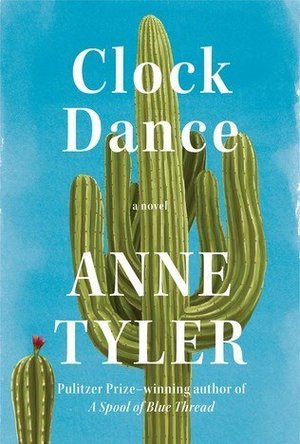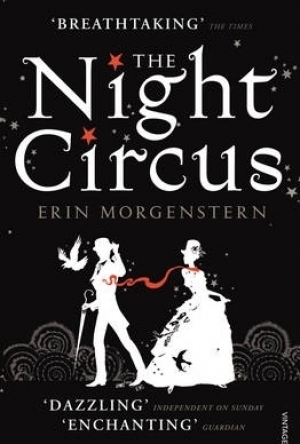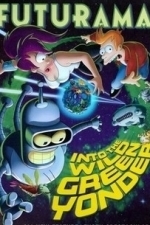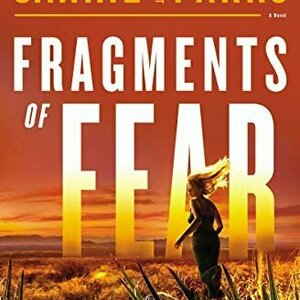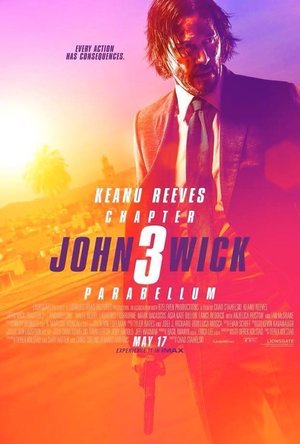Search
Search results

Basic Sports Timer: Countdown, Interval & BoxDrill
Sports and Health & Fitness
App
+++ 50% OFF for a Limited Time +++ We use this Basic Sports Timer for our Wing Tsun workouts. It's...
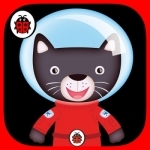
Ladybird: I’m Ready to Spell
Education and Games
App
** Reached No. 1 in Kids in the App Store! ** ** Previously listed as one of the top apps on iTunes...

ScoreKeeper ScoreBoard
Sports and Games
App
ScoreKeeper ScoreBoard - the Ultimate Scoreboard app! ...
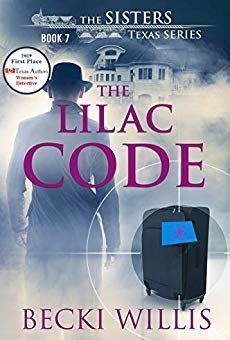
The Lilac Code: The Sisters, Texas Mystery Series Book 7
Book
Will a case of mistaken identity be the death of her? Madison Reynolds is looking forward to a...
series fiction adult mystery cozy mystery murder
Goddess in the Stacks (553 KP) rated Clock Dance in Books
Aug 11, 2018
Clock Dance was the second pick for Barnes & Noble's nation-wide Book Club. (The first was Meg Wolitzer's The Female Persuasion, back in May.) Like the first one, it was contemporary fiction, which I'm pretty meh about. When I learned it was set mostly in Baltimore, and written by a local author, I became more interested. I'm originally from Oregon, but Baltimore has become my home, and I enjoy reading about it. We had a slightly larger group than last time, but I was the only returning attendee besides the store employee, Sam, who led the discussion.
Sam opened the discussion with the same question that she started the last one with - "Did you like the main character?" It's an interesting question because most people ask "Did you like the book?" which can have a different answer. I don't usually read books in which I don't like the main character, but that's usually because I choose my books. I'm not choosing my Book Club books, so it's a good question. Unlike last time, I did like Willa. I disagreed with her judgment when it came to husbands, but I still sympathized with her. I mentioned that I didn't like that she just floated through most of her life without any real ambition, but to be honest, I've done that too. I'm not a very ambitious person - or my ambitions are quite low. I think that, perhaps, is the difference. I find a lot of fulfillment in being, effectively, my husband's personal assistant. It's fun. Willa did not seem to find it fulfilling, she just - didn't want to rock the boat.
I like how we saw each of Willa's "defining moments" - the book opens on her as a child, her volatile mother having stormed out of the house during an argument. Her mother really does a number on her as a child. I think it's why she hates to rock the boat so much. From here, we fast forward to college, and Willa's boyfriend proposing to her after gaslighting her about an event that happened on the plane. Willa's mother disapproves. Vehemently. I think that's part of why Willa accepts. Our next view of Willa's life is the accident that takes her husband's life, and its aftermath.
Then we finally start into the real meat of the book, twenty years after the death of her first husband. Her sons have grown and moved away, she has remarried, and both of her parents have passed. Her husband is a little distant, and she seems rather untethered. Then she gets the strangest phone call. It turns out her eldest son lived with a woman (Denise) and her daughter for a little while in Baltimore; he has since moved on, but "Sean's mother" is still a phone number on Denise's emergency contact list. So when Denise is shot in the leg and put in the hospital, a neighbor lady sees it, assumes Willa is the grandmother of the child, and calls her to come take care of her. It's a little convoluted, and Willa can't even adequately explain to her husband why she's decided to fly to Baltimore to take care of a child she has no relation to, but she does so anyway.
This is where we get to Baltimore, and, in Anne Tyler's own words, "when her story changes to Technicolor."
I actually live just outside Baltimore myself, but one of my best friends lives in Charles Village, and I could SO EASILY envision Willa's neighborhood as a street of rowhomes. (Turns out it's probably based on a neighborhood in Hamilton, according to the Baltimore Sun.) I was even mapping locations in Willa's house to my friend's rowhome! Anne Tyler really captures the spirit of Baltimore, and now I want to read more of her books, even if they are contemporary fiction!
Overall I enjoyed Clock Dance; Anne Tyler is very good at subtle character growth, which is quite realistic. People don't often change all at once. Sometimes it takes a lifetime of being told what to do before finally waking up to what you WANT to do.
You can find all my reviews at http://goddessinthestacks.wordpress.com
Sam opened the discussion with the same question that she started the last one with - "Did you like the main character?" It's an interesting question because most people ask "Did you like the book?" which can have a different answer. I don't usually read books in which I don't like the main character, but that's usually because I choose my books. I'm not choosing my Book Club books, so it's a good question. Unlike last time, I did like Willa. I disagreed with her judgment when it came to husbands, but I still sympathized with her. I mentioned that I didn't like that she just floated through most of her life without any real ambition, but to be honest, I've done that too. I'm not a very ambitious person - or my ambitions are quite low. I think that, perhaps, is the difference. I find a lot of fulfillment in being, effectively, my husband's personal assistant. It's fun. Willa did not seem to find it fulfilling, she just - didn't want to rock the boat.
I like how we saw each of Willa's "defining moments" - the book opens on her as a child, her volatile mother having stormed out of the house during an argument. Her mother really does a number on her as a child. I think it's why she hates to rock the boat so much. From here, we fast forward to college, and Willa's boyfriend proposing to her after gaslighting her about an event that happened on the plane. Willa's mother disapproves. Vehemently. I think that's part of why Willa accepts. Our next view of Willa's life is the accident that takes her husband's life, and its aftermath.
Then we finally start into the real meat of the book, twenty years after the death of her first husband. Her sons have grown and moved away, she has remarried, and both of her parents have passed. Her husband is a little distant, and she seems rather untethered. Then she gets the strangest phone call. It turns out her eldest son lived with a woman (Denise) and her daughter for a little while in Baltimore; he has since moved on, but "Sean's mother" is still a phone number on Denise's emergency contact list. So when Denise is shot in the leg and put in the hospital, a neighbor lady sees it, assumes Willa is the grandmother of the child, and calls her to come take care of her. It's a little convoluted, and Willa can't even adequately explain to her husband why she's decided to fly to Baltimore to take care of a child she has no relation to, but she does so anyway.
This is where we get to Baltimore, and, in Anne Tyler's own words, "when her story changes to Technicolor."
I actually live just outside Baltimore myself, but one of my best friends lives in Charles Village, and I could SO EASILY envision Willa's neighborhood as a street of rowhomes. (Turns out it's probably based on a neighborhood in Hamilton, according to the Baltimore Sun.) I was even mapping locations in Willa's house to my friend's rowhome! Anne Tyler really captures the spirit of Baltimore, and now I want to read more of her books, even if they are contemporary fiction!
Overall I enjoyed Clock Dance; Anne Tyler is very good at subtle character growth, which is quite realistic. People don't often change all at once. Sometimes it takes a lifetime of being told what to do before finally waking up to what you WANT to do.
You can find all my reviews at http://goddessinthestacks.wordpress.com
Louise (64 KP) rated The Night Circus in Books
Jul 2, 2018
From the ratings I had high expectations for this book, the synopsis was so intriguing it was a must read! I love magicians and circus’ (though I have actually never been to one)
The story was told in a third person narrative, it is very descriptive from the tents, the lavish dinners, magic and illusions that are performed. There are two young magicians, they are told that they’re in training for a competition, but not told who their opponents are or even when it begins.
Celia is the daughter of the legendary Prospero the enchanter, at 6 years old her after her mother’s death she is left to her fathers devices and signs her up for competition, She is then practicing constantly to become the best Magician possible.
Marco is the protegé of Mr A.H-, Marco was plucked from an orphanage one day after completing some menial tasks and was sent to live and study magic, he too was also informed that he would be in a competition but the details were very vague.
There are other characters in this book that all relate to the circus and intertwine with Celia and Marco’s story, however I don’t want to give too much away.
The descriptive writing in this book was wonderful I felt that I was at the circus, watching the illusionist,contortionists and acrobats, the tents, the magical clock, I could go on, however I felt this took a lot away from any character development and plot. There is not much of a plot to this book and each chapter goes back and forth, which felt it a bit disjointed
The romance in this book was tiresome, it didn’t feel real, there was no spark, I felt no emotion in the writing and it was a bit instalovey, as soon as they knew they were opponents there was this sudden love for one another.
I did enjoy the book and the writing but I didn’t love it, I think it has been overhyped a little.
Overall I rated this book 3.5 stars out 5
For more of my reviews please check out my blog www.louiselovesbooks.wordpress.com
The story was told in a third person narrative, it is very descriptive from the tents, the lavish dinners, magic and illusions that are performed. There are two young magicians, they are told that they’re in training for a competition, but not told who their opponents are or even when it begins.
Celia is the daughter of the legendary Prospero the enchanter, at 6 years old her after her mother’s death she is left to her fathers devices and signs her up for competition, She is then practicing constantly to become the best Magician possible.
Marco is the protegé of Mr A.H-, Marco was plucked from an orphanage one day after completing some menial tasks and was sent to live and study magic, he too was also informed that he would be in a competition but the details were very vague.
There are other characters in this book that all relate to the circus and intertwine with Celia and Marco’s story, however I don’t want to give too much away.
The descriptive writing in this book was wonderful I felt that I was at the circus, watching the illusionist,contortionists and acrobats, the tents, the magical clock, I could go on, however I felt this took a lot away from any character development and plot. There is not much of a plot to this book and each chapter goes back and forth, which felt it a bit disjointed
The romance in this book was tiresome, it didn’t feel real, there was no spark, I felt no emotion in the writing and it was a bit instalovey, as soon as they knew they were opponents there was this sudden love for one another.
I did enjoy the book and the writing but I didn’t love it, I think it has been overhyped a little.
Overall I rated this book 3.5 stars out 5
For more of my reviews please check out my blog www.louiselovesbooks.wordpress.com
Gareth von Kallenbach (980 KP) rated Futurama: Into the Wild Green Yonder (2009) in Movies
Aug 14, 2019
The fourth (and lets hope not final) of the planned straight to DVD Futurama movies, “Futurama: Into The Wild Green Yonder” has arrived and continues the winning formula of the television series and three previous films as well as ties things up nicely should this be the final outing for the Planet Express crew.
The film opens with a new take on the traditional opening and we are treated to the scenic Mars Vegas complete with futuristic interpretations of the class Las Vegas hotels. As the film opens, Mars Vegas is being destroyed to make way for a new and even better Mars Vegas. This does not sit well with Amy (Lauren Tom) as her father is the one behind all of this, and when she learns that he plans to eliminate portions of a solar system to make the universes biggest miniature golf course, she decides to join a militant feminist group with Leela (Katey Sagal).
As this is happening Fry (Billy West), learns that he has the power to read minds and is recruited by a secret organization who inform him of a great evil that is loose in the galaxy and that he will be the key to preserving the universe.
Bender (John Di Maggio), as usual is happy to drink and grift his way through life, that is until a affair with a local crime figures wife provides him with some danger and distraction.
When a planned protest goes horribly wrong, Leela and Amy end up as fugitives and are doggedly pursued by Captain Zapp Brannigan as they race against the clock to save the creatures of the solar system from Leo Wong’s planned construction.
The film is as usual, loaded with laughs and plenty of pop culture gags. Snoop Dogg and Penn Jilette make cameo appearances as do many of the characters from the series.
With sharp picture and sound, this is a very enjoyable new adventure for fans and should add demand for future adventures in the series and provide great viewing enjoyment.
There are loads of extras which include deleted scenes, commentaries, as well as deleted scenes.
The film opens with a new take on the traditional opening and we are treated to the scenic Mars Vegas complete with futuristic interpretations of the class Las Vegas hotels. As the film opens, Mars Vegas is being destroyed to make way for a new and even better Mars Vegas. This does not sit well with Amy (Lauren Tom) as her father is the one behind all of this, and when she learns that he plans to eliminate portions of a solar system to make the universes biggest miniature golf course, she decides to join a militant feminist group with Leela (Katey Sagal).
As this is happening Fry (Billy West), learns that he has the power to read minds and is recruited by a secret organization who inform him of a great evil that is loose in the galaxy and that he will be the key to preserving the universe.
Bender (John Di Maggio), as usual is happy to drink and grift his way through life, that is until a affair with a local crime figures wife provides him with some danger and distraction.
When a planned protest goes horribly wrong, Leela and Amy end up as fugitives and are doggedly pursued by Captain Zapp Brannigan as they race against the clock to save the creatures of the solar system from Leo Wong’s planned construction.
The film is as usual, loaded with laughs and plenty of pop culture gags. Snoop Dogg and Penn Jilette make cameo appearances as do many of the characters from the series.
With sharp picture and sound, this is a very enjoyable new adventure for fans and should add demand for future adventures in the series and provide great viewing enjoyment.
There are loads of extras which include deleted scenes, commentaries, as well as deleted scenes.
MaryAnn (14 KP) rated Fragments of Fear in Books
Nov 4, 2019
From award-winning author Carrie Stuart Parks comes a new novel with danger that reaches from a New Mexico Anasazi archaeological dig to micro- and nano-chip technology.
Evelyn Yvonne McTavish-Tavish to her friends-had her almost perfect world in Albuquerque, New Mexico, come to a crashing end with the suicide of her fiancé. As she struggles to put her life back together and make a living from her art, shes given the news that her dog is about to be destroyed at the dog pound. Except she doesnt own a dog. The shelter is adamant that the microchip embedded in the canine-with her name and address-makes it hers. Tavish recognizes the dog as one owned by an archaeologist named Pat Caron because she did a commissioned drawing of the two of them months earlier. The simple solution is to return the dog to his owner, but she arrives only to discover Carons murdered body. After meeting undercover FBI agent Sawyer Price the mystery deepens as more people start disappearing and Tavish becomes a target as well. Her only solution is to find the links between microchip technology, an Anasazi site in the desert, her fiancés death, a late-night radio show, and the dog. And the clock is ticking.
My Thoughts: This is an interesting suspense mystery novel. The author has a whimsical way of writing, that puts a little humor into the storyline. When the story begins, we have a young woman at the funeral of her fiance, then finds herself with a dog she doesn't really want and then discovers that it's the owner has been murdered. No wonder Tavish had so many panic attacks. I really enjoyed this novel. It kept my attention from the beginning and did not disappoint me throughout the story.
I enjoyed this novel, the one point I did like about this novel, is that the main character does come to Christ, and learns to overcome her fears by leaning on God.
I look forward to more from Carrie Stuart Parks.
????
Evelyn Yvonne McTavish-Tavish to her friends-had her almost perfect world in Albuquerque, New Mexico, come to a crashing end with the suicide of her fiancé. As she struggles to put her life back together and make a living from her art, shes given the news that her dog is about to be destroyed at the dog pound. Except she doesnt own a dog. The shelter is adamant that the microchip embedded in the canine-with her name and address-makes it hers. Tavish recognizes the dog as one owned by an archaeologist named Pat Caron because she did a commissioned drawing of the two of them months earlier. The simple solution is to return the dog to his owner, but she arrives only to discover Carons murdered body. After meeting undercover FBI agent Sawyer Price the mystery deepens as more people start disappearing and Tavish becomes a target as well. Her only solution is to find the links between microchip technology, an Anasazi site in the desert, her fiancés death, a late-night radio show, and the dog. And the clock is ticking.
My Thoughts: This is an interesting suspense mystery novel. The author has a whimsical way of writing, that puts a little humor into the storyline. When the story begins, we have a young woman at the funeral of her fiance, then finds herself with a dog she doesn't really want and then discovers that it's the owner has been murdered. No wonder Tavish had so many panic attacks. I really enjoyed this novel. It kept my attention from the beginning and did not disappoint me throughout the story.
I enjoyed this novel, the one point I did like about this novel, is that the main character does come to Christ, and learns to overcome her fears by leaning on God.
I look forward to more from Carrie Stuart Parks.
????
JT (287 KP) rated John Wick: Chapter 3 - Parabellum (2019) in Movies
Mar 10, 2020
John Wick: Chapter 3 – Parabellum picks up where chapter 2 left off, with young Johnathan running for his life as the clock ticks down until the $14 million bounty on his head is activated. With man’s best friend in tow, he searches for a place to patch himself up before he is finally made excommunicado – flipping a gold coin as a rite of passage.
It seems funny that we have got to this point in the story which involved a murdered puppy and a stolen car, but we needn’t dwell on that for too long before the carnage starts to unravel at a frenetic pace. Not since the Raid 2 has there been fight sequences choreographed with such vicious aplomb, it leaves you breathless.
The stunt coordinators give us a range of unique locations for John Wick to dispatch his enemies; including a room packed full of antique ceremonial knives and a glass room displaying a variety of crystal skulls – it isn’t just bones getting shattered here. Not forgetting a horse chase that is simply spectacular.
On paper the action genre might be one of the simplest to execute, add some elaborate set pieces, crazy stunts and a pumping score and you have a recipe for success – you can even drop the odd plot hole without notice.
Director Chad Stahelski has helmed all three films and is able to give Wick the tools needed to off anyone he comes into close contact with. Is there no end to his talents – as he uses a library book to kill off a 7ft assassin and handle weaponry around a Moroccan bazaar with seamless precision.
He is aided in his quest to reach the High Table (a place to atone for his sin of killing on Continental grounds) by Sofia (Halle Berry) who begrudgingly agrees to help him. Despite her minimal screen time she does more than enough to leave a lasting impression – if not her, then most definitely the pair of vicious K-9s complete with snug fitting Kevlar vests that accompany her.
As an action film this is what I crave, something that is relentless from start to finish – I can only lick my lips in anticipation of the inevitable Chapter 4!
It seems funny that we have got to this point in the story which involved a murdered puppy and a stolen car, but we needn’t dwell on that for too long before the carnage starts to unravel at a frenetic pace. Not since the Raid 2 has there been fight sequences choreographed with such vicious aplomb, it leaves you breathless.
The stunt coordinators give us a range of unique locations for John Wick to dispatch his enemies; including a room packed full of antique ceremonial knives and a glass room displaying a variety of crystal skulls – it isn’t just bones getting shattered here. Not forgetting a horse chase that is simply spectacular.
On paper the action genre might be one of the simplest to execute, add some elaborate set pieces, crazy stunts and a pumping score and you have a recipe for success – you can even drop the odd plot hole without notice.
Director Chad Stahelski has helmed all three films and is able to give Wick the tools needed to off anyone he comes into close contact with. Is there no end to his talents – as he uses a library book to kill off a 7ft assassin and handle weaponry around a Moroccan bazaar with seamless precision.
He is aided in his quest to reach the High Table (a place to atone for his sin of killing on Continental grounds) by Sofia (Halle Berry) who begrudgingly agrees to help him. Despite her minimal screen time she does more than enough to leave a lasting impression – if not her, then most definitely the pair of vicious K-9s complete with snug fitting Kevlar vests that accompany her.
As an action film this is what I crave, something that is relentless from start to finish – I can only lick my lips in anticipation of the inevitable Chapter 4!

